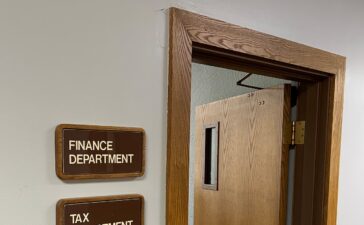“Let me tell you about the very rich. They are different from you and me.”
– F. Scott Fitzgerald
The Whims of Fortune is a memoir from Guy de Rothschild (1909-2007), 20th century successor to Europe’s greatest banking dynasty. In his account, Rothschild deposits sundry examples of how the very rich are different. The family employed a servant whose sole job was to row a boat across the estate’s lake at mealtimes so as to enliven the landscape for diners. The Rothschilds were so accustomed to meticulously manicured landscapes that his grandmother was blown away the first time she saw leaves on a friend’s lawn: “It’s magnificent! How beautiful. But where do you get them from?”
The very rich can afford to be eccentric. There was the third Lord Moynihan, whose career can be summed up as con man, bongo drummer, brothel keeper. Lord Moynihan loved to brag that he once made love in the House of Lords. And in 1960, after an American journalist criticized his wife’s dancing, Moynihan challenged the critic to a duel that, according to Wikipedia, involved the “combatants attacking each other with their buttocks.” There was also the Baroness de Koenigswarter, the Bebop Baroness, who loved flying planes and painting “abstruse canvases using a mixture of acrylic, milk, Scotch whisky, and scent.” The very rich can afford to give each other ridiculous nicknames like Loppy, Topsy, Tinkie, Stubby, Squeaky, and Porchie. Eccentricities often involve food, like using bacon slices for bookmarks, habitually eating charcoal, or the most revolting of all: breakfast in bed.
The very rich are also different when it comes to higher education. Perusing a recent issue of the student newspaper from one of America’s wealthiest private high schools, I came across an op-ed titled Rejection and Redirection, a post-mortem on the college admission process that, according to the graduating author, “truly pushes every student to the edge of their physical and emotional limits.” The piece is woefully riveting from the drop: “Five months and 15 days ago today, I did not get into my Restrictive Early Action dream school.” She goes on: “I grieved my rejection with my friends who also do not have influential parents or strong connections.” But rejection also provided valuable life lessons: “Not getting in during my early round, even as a top GPA applicant in the early pool… taught me that life is not always fair.” What kind of admissions outcome could justify this passive-aggressive presentation? With a bit of sleuthing, I learned the downtrodden student had settled for the University of Pennsylvania.
Penn’s endowment is $21 billion – wealthier than any Rothschild, Loppy, or Topsy. If the very rich are different from you and me, very rich universities are even more different. While they continue to have extravagant endowments and long lines, most schools struggle. Like Penn’s neighbor, University of the Arts, a Philadelphia institution founded in 1876, which this month surprised pretty much everyone by announcing its closure.
When I first heard the UArts news, I thought the most notable element was the fact that new President Kerry Walk previously spent eight years leading Marymount Manhattan, which is also closing via absorption into Northeastern. Is Kerry Walk merely unlucky, or is she the Typhoid Mary of higher education? Then I realized there was more to the story.
Enrollment at UArts had dropped by nearly half in the past decade, from over 2,000 students to about 1,150. But enrollment was looking up for the fall. And last year, the University’s audit showed $189M in assets and only $66M in liabilities. So what could have prompted its decision to close with no teachout plan and no help for students?
According to UArts’ announcement, it could not “cover significant, unanticipated expenses. The situation came to light very suddenly” and the school was “unable to bridge the necessary gaps.” President Walk subsequently revealed that she only learned of the cash flow problem on May 14. “We had unanticipated expenses we had to cover with cash,” she said. “At the same time, some of the deposits we expected into that bank account were late and just didn’t come in.”
Such extreme financial inflexibility is highly unusual considering that the UArts:
· Had $63M in revenue in FY ‘23
· Hadn’t yet attempted common cost-cutting measures such as laying off some of its 800 employees or reducing President Walk’s $650K salary
· Recently completed a $67M capital campaign
· Owed money to rational vendors and creditors (more likely to be paid by an operating institution than through bankruptcy), not to the mob or the Philly Phanatic.
Money not owed to this guy
Given University of the Arts’ prime real estate in downtown Philadelphia, it’s likely that a larger, financially stronger local university like Penn, Temple, or Drexel absorbs it. The name and some of its programs may even continue in some form. But that’s cold comfort for UArts faculty, staff, students, and alumni.
The bigger story is that three levels of oversight – UArts’ board, accreditor, and the U.S. Department of Education – failed to anticipate fiscal peril and take appropriate action. In the ample reporting on the debacle, accreditor Middle States appeared to care only for the fact that UArts failed to provide proper notice of closure, not that the University ran out of cash on its watch – a petty, inconsequential argument, not unlike one made by a certain disappointed senior at an elite private high school.
Why didn’t anyone catch UArts before it fell? Let’s start with the Department of Education (ED). To qualify for federal student grants and loans, an institution must demonstrate financial responsibility. Private universities are required to pass a few basic tests to qualify:
1. Sufficient cash reserves to make financial aid refunds
2. Current on debt payments
3. Audited financial statement showing no going concern risk
4. Composite score of at least 1.5
As the first and second points have little bearing on UArts’ near-term liquidity, ED is presumably relying on the audit and composite score. But audits are backward-facing, completed 4-6 months after the end of the fiscal year. So they’ll never fully capture or predict cash flow challenges faced by an institution. To wit, while UArts’ 2023 audit completed by Baker Tilly showed a $12M operating deficit – one that was mostly closed through selling real estate and marking up investments – the audit found no going concern issues or deficiencies that would have triggered regulatory action. In its report, Baker Tilly threw the going concern ball back into management’s court: “management is required to evaluate whether there are conditions or events… that raise substantial doubt about the University’s ability to continue as a going concern.”
That leaves only one metric plausibly connected to an institution’s ability to cover payroll or payments: the composite score. What’s the composite score? It “combines different measures of fundamental elements of financial health to yield a single measure of a school’s overall financial health.” But no element of the composite score looks squarely at operating revenue vs. operating expenses; no element is directly connected to enrollment. And the one of three metrics incorporating both revenue and expenses (but not solely from operations) – net income ratio – is weighted at only 20% of the composite score (30% for for-profit schools). The premise seems to be that fundamental financial health is less important than the ability to beg, borrow, or steal from the endowment or other assets in order to cover operating deficits. While this may be possible for a limited period of time, it’s hard to see how it reflects a healthy operation or going concern. Moreover, all the numbers are based on the prior year’s audited financials. There’s no check-in or filing required once fall enrollment comes in and a school knows what the year is going to look like and whether revenue from operations is likely to be sufficient to cover expenses.
It’s clear ED hasn’t been measuring the right things. As Phil Hill reported in the wake of the UArts announcement, of the 34 schools that have announced closure or significant cuts this year, only three were subject to additional scrutiny by ED (i.e., heightened cash monitoring). For the rest, it’s been business as usual, including University of the Arts. Hill agrees that the “more important problem to solve is just how blind ED is when colleges are clearly showing signs of closure.”
ED’s financial responsibility emperor has no clothes and neither accreditors nor boards of trustees are filling the gap. Accreditors only demand that colleges provide an audit alongside a multi-year budget, which could be as real as a Loppy, Topsy, or Tinkie fever dream. Presumably, accreditors are depending on the financial wizards at ED to make sure schools don’t go under. And while boards are supposed to have financial experts, particularly on audit committees, when expenses begin to outpace revenue it’s natural to want to kick the can down the road rather than asking difficult questions and discomfiting friends who may have appointed (and re-appointed) you. The next natural response is hope, but hope is not a strategy. Many boards avoid hard decisions until it’s too late.
Although plenty of private companies also go out of business, this is one area where private company governance is superior. Private company boards represent shareholders. It’s clear who they’re accountable to and what they’re accountable for: preserving and hopefully increasing the value of the company’s equity. With college boards, it’s clear as mud. Do trustees represent current students? Alumni? The public? All are arguably better served by trudging forward even if there’s only a smidgen of hope.
Projecting solvency – whether operating revenue is likely to cover operating expenses for the next 12 months – is a challenge for every organization. While expenses are generally fixed (employees, rent) or predictably vary by revenue (cost of goods, marketing), revenue can swing wildly. But determining solvency or “revenue coverage” is easier for higher education than just about any other business. Sure, some highly valued companies sell products on a subscription basis with very high renewal rates (think SaaS businesses like Salesforce). But the vast majority are tasked with selling one unit or project at a time. Thanks to multi-year degree programs, higher education customers should be more predictable year to year. As a result, colleges and universities are close to the top of the revenue food chain. Moreover, revenue is more predictable within a fiscal year: typically locked in as of August. And due to the timing of semester starts and financial aid disbursements (August/September, January), the cash-low point is almost always summer. So UArts should have had time to make cuts and changes.
The demise of University of the Arts demonstrates current financial guardrails aren’t working. Colleges and universities at risk of not making payments or payroll should not be able to make up for that fundamental weakness with another financial metric; at a minimum, net income ratio should be weighted much higher than 20%. Better yet, revenue coverage should be a separate test; colleges that don’t pass should have the burden of demonstrating both that they’re able to cover a projected operating deficit with other assets and that they have a viable plan to eliminate it. If ED (or Middle States, or perhaps Pennsylvania) had a revenue coverage test, it would have caught UArts and either something could have been done, or at least students wouldn’t have been left in the lurch.
Finance and accounting issues have a tendency to move from wonky to mainstream – see e.g., Great Recession. This one may be next. The environment was already challenging. So far this year, colleges are closing at an unprecedented rate of one per week. Even a school like Brandeis is having problems. But the FAFSA fiasco could be the straw that breaks budgets. It looks as though FAFSA completions will be down about 10% this year, which means a 10% decline in new enrollment could be the baseline for all but very rich schools while smaller privates and regional publics could be down much more. The CEO of the National Association for College Admission Counseling says he’s spoken with a few presidents who are “between 20 percent and 30 percent below their anticipated enrollment target.”
Small schools count for the majority of institutions. As Jeff Selingo notes, 40% of colleges enroll 1,000 or fewer students while another 40% enroll between 1,000 and 5,000 students. A step-function increase in the rate of closure would seriously disrupt hundreds of thousands of lives and leave taxpayers with a failed investment in the tens of billions.
Hundreds of small colleges that the federal government and accreditors think are financially responsible are not. Unfortunately, there aren’t enough eccentric very rich people to save them. If we don’t start taking financial responsibility seriously, the problem is likely to grow like Topsy (or Loppy).

















